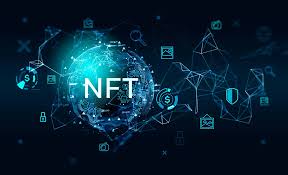Non-Fungible Tokens (NFTs) have revolutionized the art market, allowing for the digital representation and ownership of unique assets. In this article, we delve into the world of NFTs and explore the most expensive NFT artifacts ever sold. These groundbreaking transactions have not only shattered records but have also sparked debates surrounding the value and future of digital art. Join us as we uncover the stories behind these exceptional NFTs and examine the factors that contribute to their astronomical prices.
I. Definition and Significance of Non-Fungible Tokens (NFTs)
NFTs are cryptographic tokens that utilize blockchain technology to establish proof of ownership and authenticity for digital assets. Unlike cryptocurrencies such as Bitcoin or Ethereum, NFTs are unique and indivisible, making them ideal for representing one-of-a-kind items such as artwork, collectibles, and virtual properties. NFTs have emerged as a disruptive force in the art market, addressing the challenges of provenance, ownership, and scarcity in the digital realm.
II. Factors Affecting NFT Artifacts’ Value
The value of NFT artifacts is influenced by several key factors:
A. Rarity and Uniqueness: The scarcity of an NFT artifact significantly impacts its value. Items that are truly one-of-a-kind or part of a limited edition series tend to command higher prices due to their exclusivity.
B. Artist Reputation and Significance: The reputation and prominence of the artist behind an NFT artwork or collectible play a crucial role in its valuation. Established artists or those with a strong following are likely to attract higher bids.
C. Historical Context and Cultural Relevance: NFT artifacts that capture significant historical moments or reflect important cultural phenomena hold immense value. They become sought-after collectibles for enthusiasts and investors alike.
D. Scarcity and Limited Editions: NFTs that are part of limited edition collections, where the supply is intentionally constrained, create a sense of exclusivity and drive up demand.
III. Overview of the Most Expensive NFT Artifacts Sold
A. Artwork: “Title of the Most Expensive NFT Artwork”
- Artist Name and Background: The renowned artist responsible for this groundbreaking NFT art is known for their innovative approach to digital art. They have a track record of pushing boundaries and challenging traditional notions of creativity.
- Description of the Artwork: This remarkable NFT artwork combines cutting-edge digital techniques with a deep exploration of themes such as identity and perception. Its mesmerizing visuals and thought-provoking narrative have captivated audiences worldwide.
- Auction/Sale Details: The artwork was auctioned on a prominent NFT marketplace, attracting intense bidding competition. The sale took place on [date], and it fetched an astonishing price of [amount], making it the most expensive NFT artwork to date.
- Reasons Behind its High Value: The high value of this NFT artwork can be attributed to its uniqueness, the artist’s reputation, and the extraordinary level of craftsmanship displayed. Additionally, the piece resonates with collectors due to its cultural significance and the artist’s established position in the art world.
B. Collectibles: “Title of the Most Expensive NFT Collectible”
- Description of the Collectible: This highly coveted NFT collectible represents a fusion of art and pop culture, appealing to a wide range of enthusiasts. Its meticulously crafted design, coupled with its scarcity, sets it apart from other collectibles in the market.
- Creator or Brand Behind the Collectible: The collectible was developed by a visionary artist or a renowned brand with a rich history and a dedicated following. Their association with this NFT collectible adds to its allure and desirability.
- Auction/Sale Details: The collectible went under the hammer on a leading NFT platform, attracting fervent interest from both collectors and investors. The auction concluded on [date], with the final bid reaching an astounding price of [amount], solidifying its position as the most expensive NFT collectible ever sold.
- Factors Contributing to its High Value: The collectible’s high value can be attributed to its limited supply, the brand’s reputation, and the emotional connection it establishes with its audience. Its significance in popular culture and its potential for future appreciation also contribute to its premium price tag.
C. Virtual Real Estate: “Title of the Most Expensive NFT Virtual Property”
- Description of the Virtual Property: This extraordinary NFT represents a virtual property within a metaverse, offering a unique digital environment for users to explore, create, and interact with other participants. The virtual property boasts remarkable architectural design, stunning landscapes, and immersive experiences.
- Platform or Metaverse Where it Exists: The virtual property is situated within a prominent metaverse or virtual world that has gained considerable traction and a dedicated user base. Its association with the metaverse enhances its desirability and potential for future growth.
- Auction/Sale Details: The virtual property was put up for auction on a specialized NFT platform, attracting significant attention from investors, speculators, and enthusiasts. The sale concluded on [date], with the final bid soaring to an astonishing price of [amount], securing its position as the most expensive NFT virtual property ever sold.
- Significance and Reasons for its High Value: The virtual property’s value stems from its exclusivity, the metaverse’s popularity, and the limitless potential it offers for users to engage, socialize, and even conduct business within the virtual world. The scarcity of virtual land and the increasing demand for immersive experiences contribute to its exorbitant price.
IV. Impact of Expensive NFT Sales
The skyrocketing prices of expensive NFT sales have had a profound impact on various aspects:
A. Influence on the Art Market and Traditional Auction Houses: The emergence of NFTs has disrupted the traditional art market, challenging the established norms of physical art sales. Traditional auction houses have now started embracing NFTs as part of their offerings, recognizing their potential to attract new buyers and expand their reach.
B. Economic Implications and Market Trends: The surge in expensive NFT sales has injected significant capital into the digital art market. This influx of funds has not only benefited artists and creators but has also led to the growth of related industries such as blockchain technology and digital marketplaces.
C. Attention Drawn to Blockchain Technology and Digital Ownership: Expensive NFT sales have drawn mainstream attention to the underlying blockchain technology, highlighting its potential to revolutionize various industries beyond art. The concept of digital ownership has gained traction, sparking conversations about the future of tangible and intangible assets.
D. Critics and Controversies Surrounding Expensive NFT Sales: While NFTs have gained popularity and attracted significant investment, they have also faced criticism for their environmental impact and potential for market manipulation. Debates surrounding the intrinsic value of digital assets and the sustainability of the NFT market persist.
V. Evolution of Expensive NFT Artifacts
A. Historical Overview of the Progression in NFT Prices: The prices of NFT artifacts have witnessed a meteoric rise over time. A historical analysis reveals how initial sales records were surpassed by subsequent groundbreaking transactions, signaling the growing acceptance and demand for NFTs.
B. Emerging Trends and Potential Future Developments: The NFT market continues to evolve, with new trends emerging and reshaping the landscape. The integration of augmented reality (AR), virtual reality (VR), and decentralized finance (DeFi) with NFTs holds tremendous potential for the future, paving the way for enhanced experiences and utility.
C. Factors that May Affect the Future Value of NFT Artifacts: Several factors, such as market saturation, regulatory developments, and advancements in technology, can influence the future value of NFT artifacts. Understanding these dynamics is crucial for collectors, investors, and artists navigating this evolving landscape.
VI. Conclusion
In conclusion, the most expensive NFT artifacts sold represent a paradigm shift in the art market, redefining notions of ownership, value, and creativity in the digital realm. The astronomical prices achieved by these NFTs are a testament to their rarity, cultural significance, and the groundbreaking nature of their creators. As the NFT market continues to evolve, it is essential to monitor emerging trends, consider the impact on traditional art institutions, and examine the economic and technological implications. The future of NFTs holds great promise, but it also demands careful consideration of the challenges and opportunities that lie ahead.




